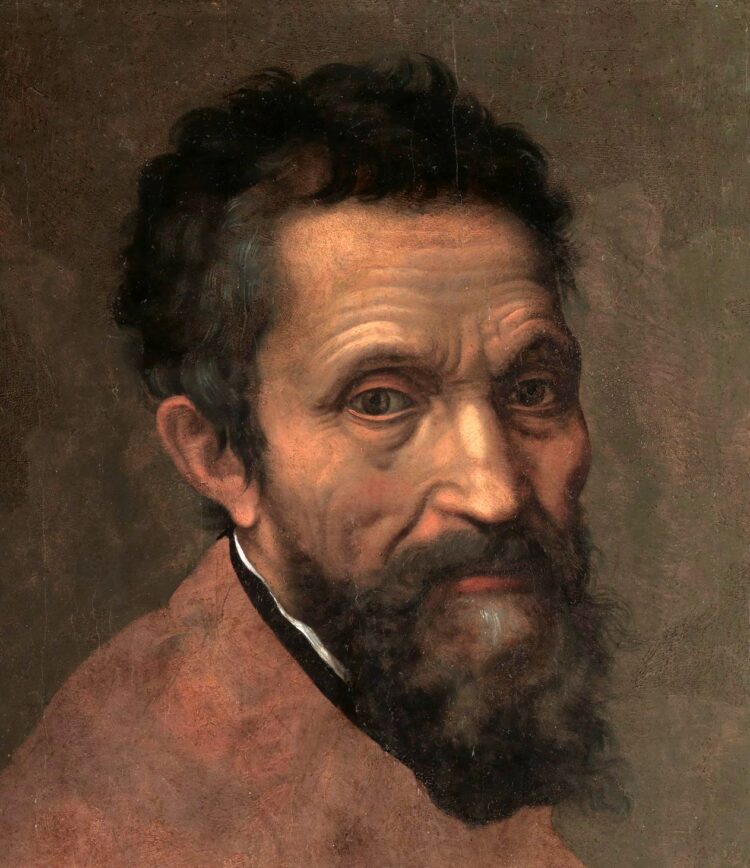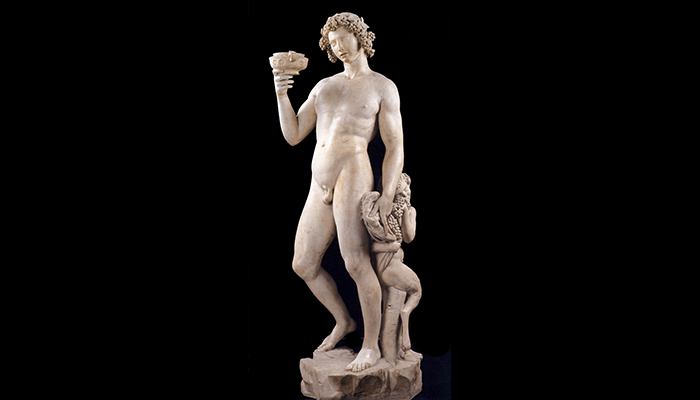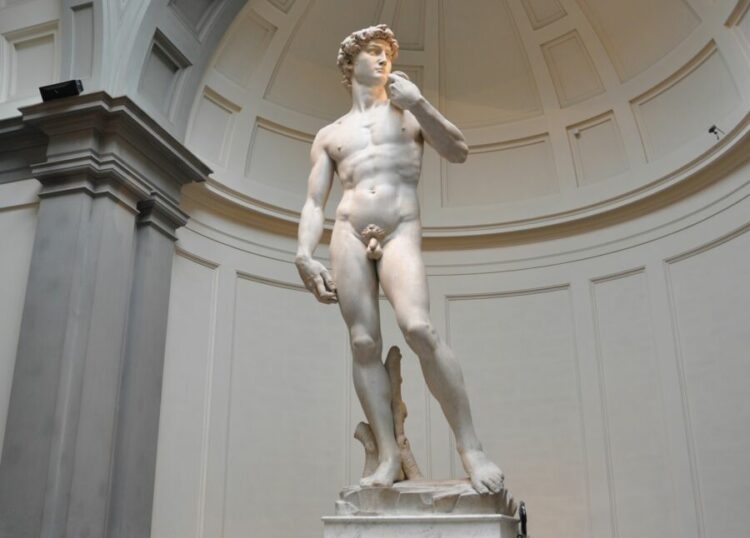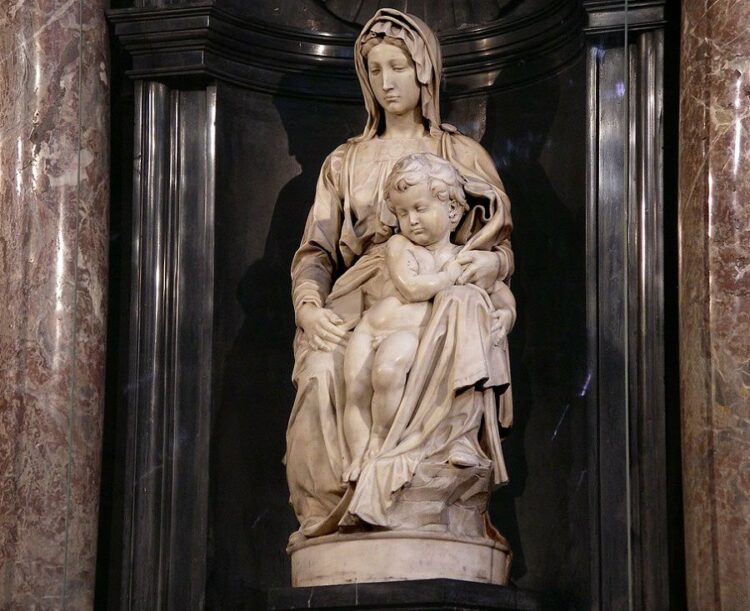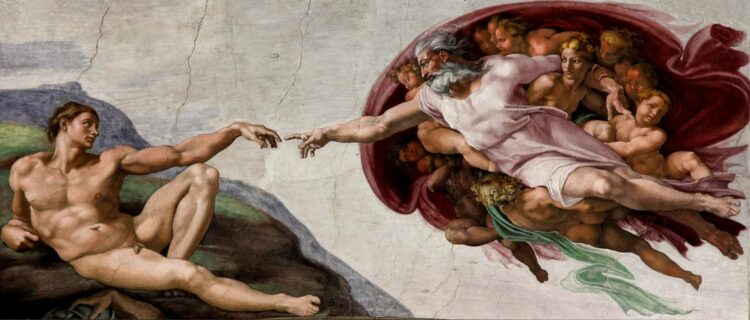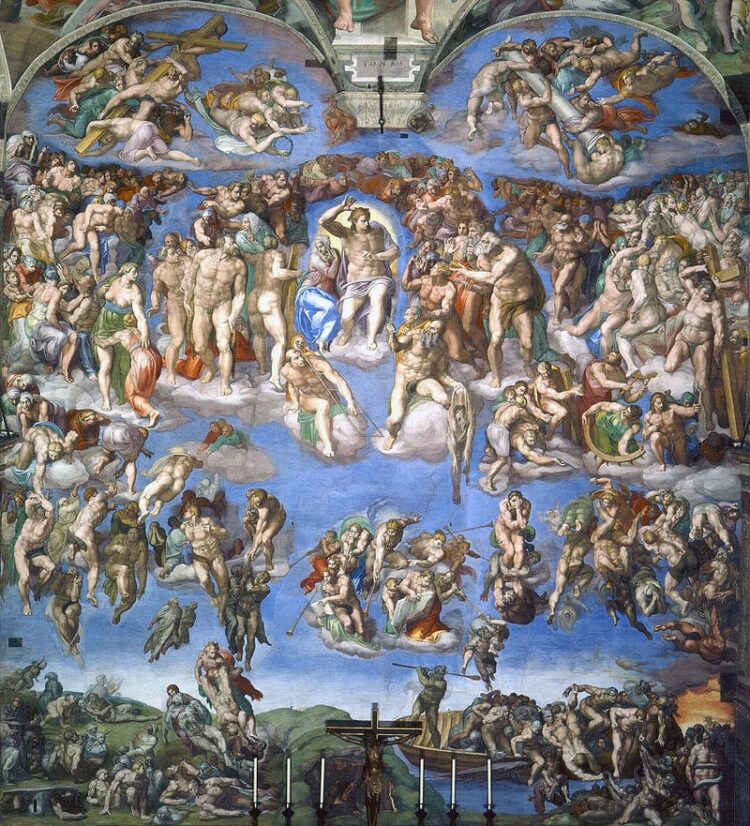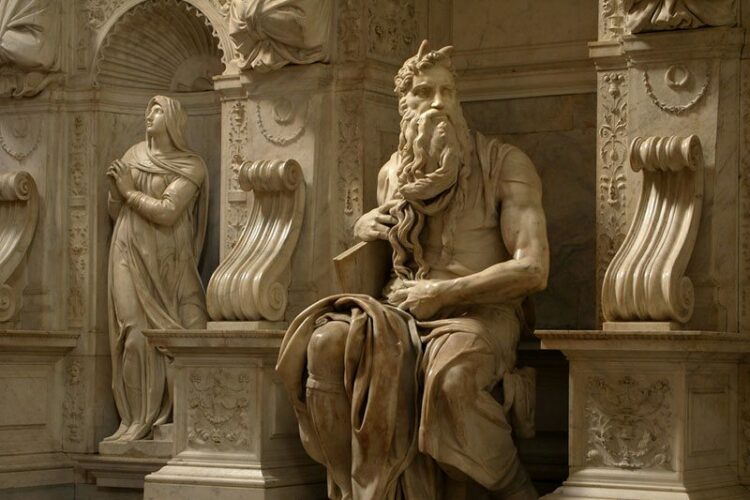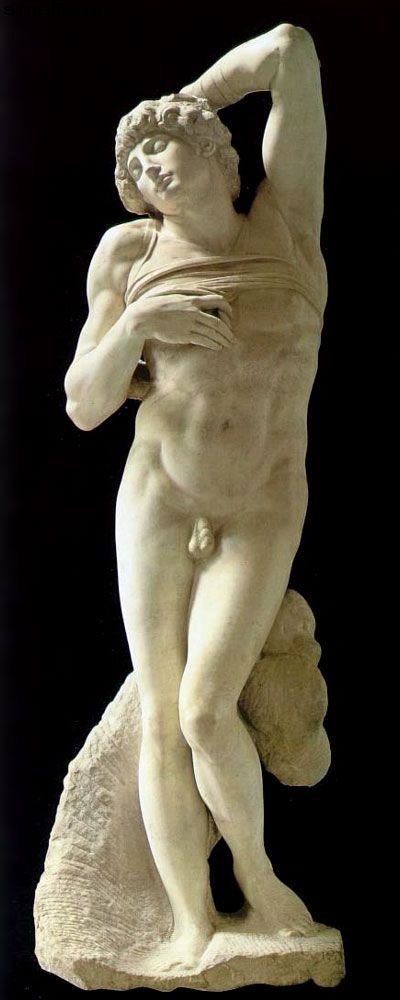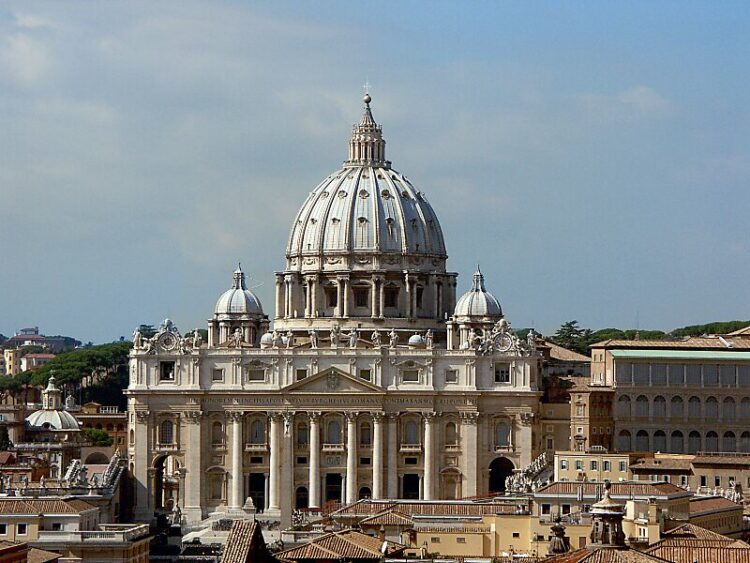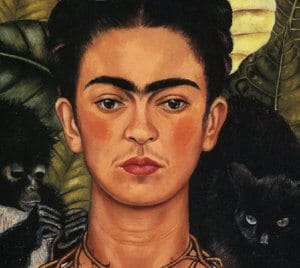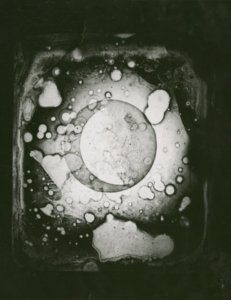Michelangelo’s works have made a great contribution to the intellectual heritage of humanity, especially to the history of art. The main reason for this is that the artist fully meets the intellectual climate shaped by the Renaissance. With the Cartesian subject that emerged with the Renaissance , the interest in human life has gradually increased. This leads to the development of factual and observational sciences in the future. In the same way, the importance given to the productive power of man increases exponentially. Michelangelo, on the other hand, is among the architects of the development process, just in the very early stages of this sequence of events.
Considering the works of Michelangelo and the quality of these works, it is possible to realize that he created an identity that marked history. Michelangelo offers us an artistic journey from sculpture to architecture, from painting to poetry. During this journey, many transformations of the thought of humanity, especially in the history of Italy, are encountered.
What is on display today, missing and missing pieces, and works of Michelangelo is a deep corpus. Now, we can all start to wander through this corpus, which is of great importance for history. With our list of Michelangelo works, we take a closer look at the masterpieces of the great master.
Michelangelo Works
1) Bacchus: Deep Emphasis on Human Being
Bacchus is Michelangelo’s work inspired by the Roman god of wine of the same name, Bacchus. Today, it can be visited in the Bargello National Museum in Florence, Italy. The importance of the work produced by the genius artist at a young age of 21 is equivalent to the size of the sculpture.
It would not be wrong to say that Bacchus reflects all the characteristics of the early Renaissance period. It is a known fact that people have glorified the gods they believed in in various ways throughout history. While this situation sometimes appears in the gigantic appearances of the gods, sometimes it appears in their high characteristic features.
This meaning, which man ascribes to the gods as a historical subject, begins to transform with the Renaissance. The work of Bacchus is also among the first shoots of this transformation. Michelangelo tries to deftly resemble a human’s body contours in sculpture. In this way, an important reference is made to the distinction between man and God.
The bunches of grapes that Bacchus holds in his hand also form his hair. The mythical creature standing next to him is none other than a human-looking satyr. Bacchus is still one of the most popular works of Michelangelo today.
2) Pietà: Divine Masterpiece of the Renaissance
Pietà, like Bacchus, is one of the early examples of Michelangelo’s works. The genius artist, who produced Bacchus at the age of 21, designs Pietà after a two-year hiatus. Let’s not go without saying that the work belongs to Michelangelo without thinking. What we mean here is that the work bears the signature of Michelangelo in all its aspects.
Even Hz. There is also the artist’s own signature on Meryem’s neck area. The creator of the Pietà and its importance in terms of art history is at an astonishing level. His mother, who was dead, Hz. An anatomically magnificent depiction of Jesus lying on Mary’s lap is presented.
This depiction is achieved by the perfect rendering of body lines, just as in Bacchus. The main purpose of the artist here is to make a reference to the gap between God and man.
Likewise, the emotional interpretation placed on the facial features of the depictions of Jesus and Mary has a genius meaning. Michelangelo’s cadaver studies and anatomy readings played a major role in the emergence of the Pietà. The work, produced in 1500, can be visited today in St. Peter’s Basilica.
3) The Statue of David: An Inherited Holy Masterpiece
It has often been said that, in addition to being an artist genius, Michelangelo is also a creator who defies authority. Michelangelo has a character that is strictly opposed to being commanded in the process of creating his works. It is precisely for this reason that he ignores the ultimatums given to him during the creation of the statue of David.
It brings a different perspective to the story of David and Goliath, which has been portrayed in various ways throughout history. At the center of this look is a depiction without Goliath. But is this the only feature that makes the gigantic statue unique in history? Of course not. David’s representation is met with as much reaction as Goliath’s lack.
Although it was accepted as a masterpiece by the art committees of the period, it was criticized by the public. Familiar with all forms of ancient Greek art, Michelangelo celebrates the same period in this work.
The representation of David in the statue contradicts the story of David, who has been represented many times in history. The main reason for this is the interest in the relationship between Ancient Greek gods and humans. It is possible to visit his work in the Academy Gallery in Florence.
4) Madonna and Child or Madonna of Bruggeli: A Neoplatonic Work
Madonna and Child represent Neoplatonism among Michelangelo’s works. Neoplatonism is basically a movement that creates itself philosophically. But over time, the current sails towards art and science. In this sense, we can say that in a short time, it is a trend that represents the perspective of life in all areas of life.
It is not surprising that this idea lies at the core of the ultra-divine and ultra-realistic attitude in Michelangelo’s works. The creator, who made references to the divine appearances of Ancient Greece in the Renaissance, uses the same technique in this work.
Just like in Pietà, the Jesus and Mary narrative reappears. The main difference in this work is that Jesus is a child. However, as in that work, extremely realistic facial and body lines are preferred.
It is notable for being an example of Neoplatonism’s doctrine of seeking divine perfection. It is quite possible to find all aspects of creativity, originality and hatred of copying in this work. The Bruggelu Madonna is also among Michelangelo’s most original and personal works.
5) The Creation of Adam: The Divine Representation of the Earth
The Creation of Adam may be among the works of Michelangelo that we encounter the most today. The reason for this is both the beauty that the work creates in the area where it is located and its historical background. Almost everyone has encountered a copy of Adam’s Creation at any point in daily life.
This encounter can take place either as a wall covering or as a computer sticker or phone cover. The importance of The Creation of Adam in terms of art history is that it fully meets the desires of its creator. Michelangelo is appointed to this job by the political and religious authority of the period.
More precisely, such divine depictions are requested to be made on the ceiling of the Sistine Chapel. Michelangelo produces this creation that made the most noise in history and made him famous. The work basically depicts the meeting of Adam and God.
God and Adam reach out to each other, but this does not happen by meeting. Around God is a cluster of humans and angels. It is noticed that they carry the god in a wide bed. However, according to various sources, this bed-like structure is used to symbolize the human mind. The Creation of Adam has become the most well-known of Michelangelo’s works.
6) Doomsday – The Last Judgment: A World Divided In Two
For the Last Judgment or Judgment Day, one of the most important examples of gothic depiction can be defined without hesitation. It is perhaps one of the darkest of the divine depictions of Michelangelo’s works. The reason for this is, of course, Michelangelo’s original and independent view of art.
Judgment Day is about the resurrected Jesus taking humanity to heaven and hell. However, there are many things going the opposite way in the work. The first of these is that the depiction of Jesus seems quite built according to its historical origin. Jesus, whose earthly body weakens as a result of his suffering, draws an appearance similar to the Greek gods.
Similarly, the work has the opposite of the bearded and dressed Jesus that appears in Christian theology. In his beardless and naked appearance, Jesus prepares people for their eternal journey and the judgment process.
The Last Judgment, which adorns the Sistine Chapel, gives life to many concepts such as heaven and hell, merit and sin. It focuses on the depiction of their divine shepherd next to people as they go to eternity. It would be correct to say the absolute opposition and unity of those who suffer and those who enjoy.
7) The Verdict of Moses: An Essay on Radical Realism
The Judgment of Moses, or in short, the statue of Moses, is one of the works of Michelangelo that pushes the boundaries of realism. 16. At the beginning of the century, Pope II. With the death of Julius, the work of the Judgment of Moses begins. Sculpture is also known for being among Michelangelo’s longest-running works.
Moses statue of Pope II. Julius was laid in his tomb exactly 32 years later. However, even throughout this process, the artist tries to do a magnificent job. The Judgment of Moses, like all his other works, is a work of extreme realism. As in the depictions of Jesus and David, Moses also gets rid of his past depictions.
The main reason for this is that Michelangelo feeds on Neoplatonic ideas. The depiction of Moses in the work has an incredibly strong and athletic appearance. When the work is read closely, it is noticed that Moses is preparing to take action.
It is also possible to see the 10 tablets standing next to the arms of Moses, who was preparing to stand up. Another interesting feature of the work is the addition of a description resulting from a translation error. The horns on the head of Moses were originally used to describe a word meaning illuminating light.
8) The Dying Slave: The Expression of Life and Death
Among Michelangelo’s works, the Dying Slave may be the work in which feelings and emotions are most expressed. It is one of the works in which the fine line between life and death is skillfully drawn in the history of art. The reason for this is not only Michelangelo’s genius in sculpture and architecture, but also his strong connection with painting.
Thanks to this bond, the Dying Slave appears. The purpose of the work, Pope II. To be planted on Julius’ grave after his death. That’s exactly what happens. In fact, Pope II. At first, many works were considered for the tomb of Julius.
However, some of these works were never completed, while others were lost today. When you look at the work, the first thing to notice is the unity of life and death. In the masterfully designed work, the union of death and life is presented with an unbelievable expression.
However, the sharpness in the facial features of the slave mentioned in the sculpture presents this to us. The sculpture represents being humanoid in all its aspects. It is like a structure preparing to become a human being, so to speak. The sculpture, like all other Michelangelo works, has an appearance that reveals its emotions and feelings.
9) St. Peter’s Basilica: The Architectural Giant of the Renaissance
St. Peter’s Basilica is one of the greatest architectural works not only of Michelangelo but also of art history. The construction of the basilica, which is located in the Vatican today, takes many years. The main architect of the work, in which many different architects have joint contributions, is none other than Michelangelo.
It is possible to find the works of names such as Carlo Maderno, Gian Lorenzo Bernini and Donato Bramante in the basilica. St. Peter’s Basilica is one of the places that gives a historical meaning to the city of Rome today. It is one of the first places visited by everyone who goes to Italy and especially Rome.
As soon as you enter the street where St. Peter’s Basilica is located, stalagmites lined up opposite each other will await you. Access to the sacred structure is provided by passing through these stalagmites. This is not the only distinguishing feature of St. Peter’s Basilica, which is among the most basic examples of Renaissance architecture.
The basilica is also a part of the common historical and cultural memory of humanity today. We recommend this building, which shines its light on a city, to all architecture, art and culture enthusiasts. St. Peter’s Basilica is the most outstanding masterpiece among Michelangelo works.
10) The Torment of St. Antonio: Childhood Genius
Michelangelo works bring to life the most important scenes in Christian history. St. Antonio and his story are of great importance in terms of Christian theology. At the age of 13, Michelangelo drew a picture representing St. Antonio. The painting depicts Saint Antonio, who was ascended into the sky by angels in the desert. However, the painting is about the moment when St. Antonio is attacked by demons just as he ascends into the sky.
The painting, which has changed hands in various ways throughout history, is now exhibited in an art gallery in Texas. At first glance at the painting, a man ascended to the sky draws attention. There are various demonic creatures around this man and they hold his arms.
The facial expression of St. Antonio represents an exhausted spirit trying to get rid of evil. His hands, arms and almost the entire body have been possessed by demons. From this point of view, the painting also reflects the medieval climate of thought. There are references to many subjects such as being deceived, possessed, and pushed into sin by Satan. An interrogation is made about the answer that St. Antonio will give. However, it is not clearly presented in this table.
Following our list of Michelangelo works, related content that may interest you:
https://ceotudent.com/tablolarin-hangi-ressama-ait-oldugunu-anlamanizi-saglayacak-bilgiler

